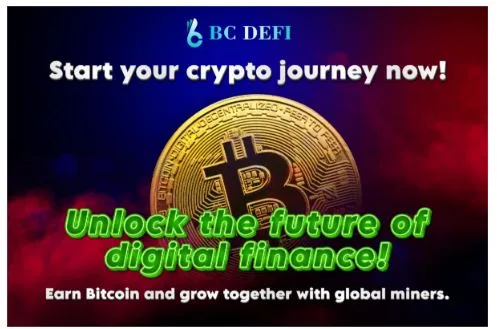Know The Growing Importance Of Tax Credit Marketplaces In Driving Green Financing
Clean energy shift is the ultimate norm on a global level now. It is becoming (or has already become) an obvious need. Yet, renewable projects face funding issues. The most promising projects require significant capital for building:
- Solar farms
- Wind parks
- Battery storage systems
And not all developers have the tax capacity to fully benefit from government incentives.
That is where tax credit marketplace are helping a lot. They are unlocking new ways to finance sustainability and making it faster, easier, and more accessible for both clean energy developers and corporations looking to meet their green goals.
What is a Tax Credit Marketplace?
In simple terms, a tax credit marketplace is a digital or structured platform that connects clean energy developers (who earn tax credits) with corporations (that can use them to offset tax liabilities).
See, how it works:
| Step | Party Involved | What Happens |
| 1 | Clean energy developer | Builds renewable projects and earns federal tax credits |
| 2 | Corporation | Purchases unused credits to reduce its federal tax bill |
| 3 | Marketplace | Acts as a secure bridge between both parties |
This process replaces the traditional “tax equity financing” model, which used to be time-consuming and complex. With marketplaces, transactions are faster, simpler, and open to a broader set of investors.
Why Tax Credit Marketplaces Are Gaining Momentum
Let us have a look at the primary reasons:
1. Increased Market Size and Liquidity
The numbers tell a compelling story. In 2023, around $9 billion worth of tax credit transactions took place out of an estimated $40 billion market. By 2024, this figure nearly tripled to $20–25 billion, and experts project $55–60 billion in 2025.
This rapid growth brings more liquidity to the sector. Developers who previously could not use all their tax credits can now sell them easily and reinvest in new renewable projects. It is a win-win for the clean energy economy.
2. Simplified Financing Mechanisms
Earlier, developers relied on tax equity deals, which is a process involving several legal and financial layers that could take up to a year. The Inflation Reduction Act (IRA) introduced a major breakthrough by allowing developers to sell their tax credits directly for cash.
| Feature | Traditional Tax Equity | Tax Credit Marketplace |
| Structure | Complex partnerships | Direct transaction |
| Timeline | 6–12 months | ~3 months |
| Investor Base | Limited | Wide corporate access |
This new model has transformed green financing. Deals that once took months to structure now close within a quarter.
3. Broader Participation
One of the most exciting outcomes of this shift is inclusivity. Previously, only large institutional investors could participate in tax equity financing. Now, through the tax credit marketplace, a wide range of corporations can invest in clean energy simply by purchasing tax credits.
Such a marketplace connects tax advisors, sustainability consultants, and corporations with hundreds of clean energy developers across the U.S. That is democratization in action.
Benefits for Stakeholders
The main advantages are as follows:
Developers: Easier Monetization of Credits
Many renewable developers do not generate enough taxable income to fully use the credits they earn. Selling them through a marketplace ensures they don’t go to waste. Instead, they convert into immediate funding. It allows developers to scale operations and start new projects faster.
Corporations: Financial and Sustainability Advantages
For corporations, purchasing tax credits can offset up to 75% of their federal tax obligations. It is a way to invest in responsible behavior apart from savings. Businesses can set their tax approaches with environmental and governance goals. It is strengthening both brand reputation and impact.
Supporting Clean Energy Growth
The influence of tax credit marketplaces extends far beyond transactions. Tax credits fund 30–60% of total project financing for clean energy. Developers sell these credits and gain steady capital to build:
- Solar farms
- Wind turbines
- Energy storage
- Clean fuel projects
This model becomes more powerful because it accelerates both business and environmental goals. Developers get their funding, and corporations get tax savings and green credibility.
Innovation, Flexibility, and Future Trends
The tax credit transfer market is evolving quickly. Sellers are now offering flexible pricing to attract investment-grade buyers, sometimes even for credits generated in future years.
And the marketplace is not limited to solar or wind anymore. It’s expanding into:
- Energy storage projects
- Advanced manufacturing
- Clean fuels and hydrogen
- Geothermal energy
The tax credit marketplace model shows great adaptability that can transform with changing technology and energy needs.
Policy and Regulatory Support
The Inflation Reduction Act (IRA) was actually a turning point for sustainable finance. It gave project sponsors the flexibility to raise funds in a proper way through tax credit trading.
The Internal Revenue Service (IRS) has also provided detailed guidance, helping businesses understand how to transfer credits securely and transparently. These clear rules have reduced uncertainty, encouraging more players to enter the market.
With ongoing regulatory support, the tax credit ecosystem is becoming stronger, more transparent, and more trusted.
The Bigger Picture: Financial and Environmental Alignment
At its core, the tax credit marketplace bridges financial motivation with climate responsibility. Corporations no longer have to choose between profit and planet; they can pursue both.
Businesses contribute directly to emission reduction goals by monetizing tax credits and reinvesting in renewable energy. All of this happens simultaneously, along with improving their financial performance.
This dual benefit is why tax credit trading is often described as the future of green finance.
Conclusion
The rise of the tax credit marketplace has redefined how clean energy is funded. It is a
- Financial innovation
- Green accelerator
Marketplaces are turning climate commitments into tangible results. Billions are flowing into renewable projects, streamlined transaction models, and inclusive participation.
As more businesses and developers join this ecosystem, the world moves closer to a cleaner, greener, and financially smarter future.



